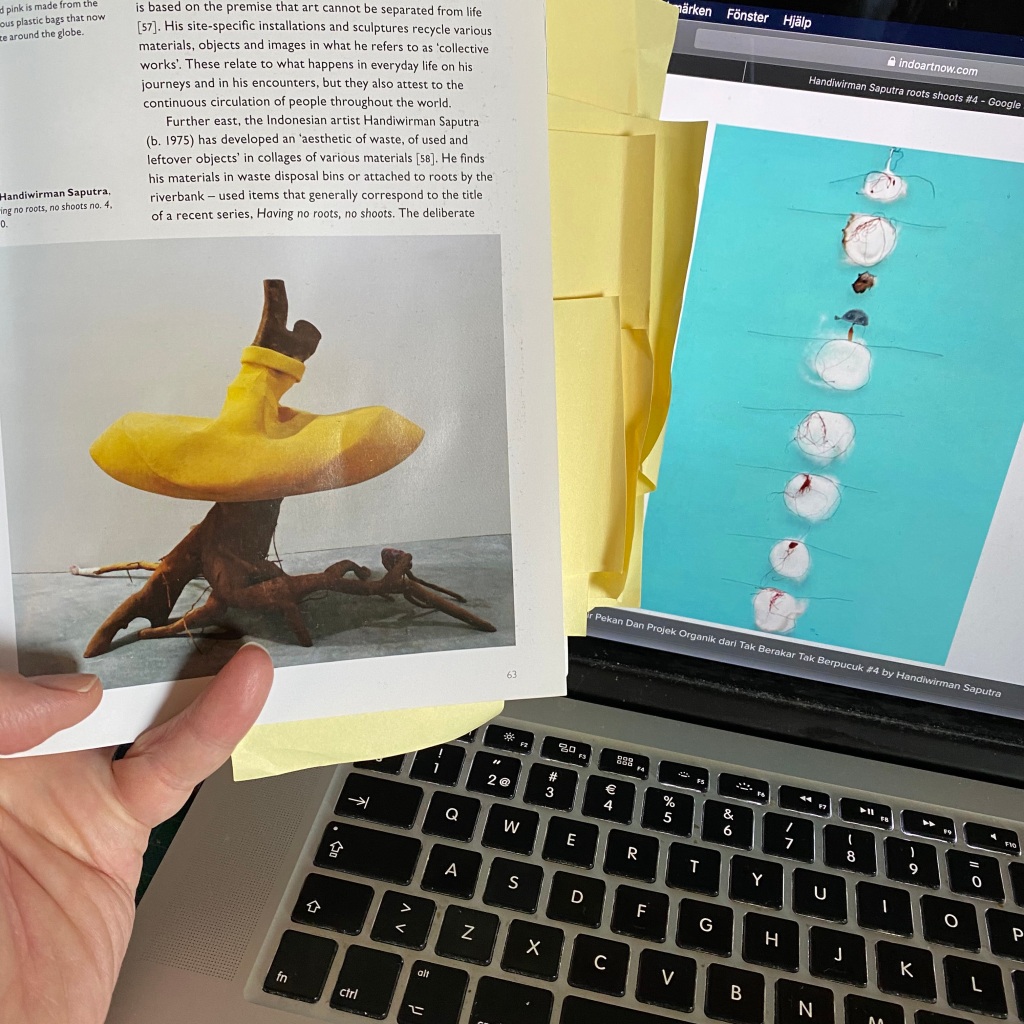
Handiwirman Saputra (b. 1975, Indonesia)
Having No Roots, No Shoots no.4, 2010/2013
This one has turned into a small art detective story. Moszynska (2013, 63-64) presents an image of a sculptural object by Saputra from 2010, commenting that he “names these works ‘objects’, though they are generally encountered through photographs”. Google search for Saputra’s project with the same title renders a totally different work – a painting from 2013 (https://indoartnow.com/artists/handiwirman-saputra visited July 29, 2020). And, by the look of multiple internet images, Saputra’s objects do not come across as being “encountered through photographs” more than other sculptural works (given that in contemporary highly mediated world, encounters with photographic representations are likely to outnumber encounters with their physical referents in most cases). On the other hand, it seems like some of his paintings may be representative of his objects, thus there still might be some strand of three-dimensional objects presented as their two-dimensional renditions going on. I am not quite sure how to frame this now, but on the other hand – what can I be sure of nowadays? I blog, therefore there is a blog?
Anyway, I will stick with my original reason to put Saputra on the list – the suggestion of making the objects that would be encountered mainly as their photographs. I have a history of that kind of making-thinking-showing covering both perishable objects and objects too large/numerous/occasion-specific to be preserved for eternity – yet interesting enough to be brought up for discussion later through their photographic renditions. Lately, however, I was also curious to explore that further and then not as archiving solution, but as deliberate creative strategy for undoing the identity, dividing the individual, partially denying access to the audience, creating a gap between knowing that there is (or has been) more, but it is no longer given and needs to be filled out by imagination – or, possibly, considered whether it was necessary at all and how the relation between what can be assumed and what can be experienced can be construed and made sense of. E.g. I would present a colourful painting through its highly degraded black and white photograph.
Making objects as assemblages of casual materials is also something that relates to my modus operandi – my current sound sculptures in making are based on similar kind of assemblages.
References
Moszynska, Anna. 2013. Sculpture Now. London: Thames & Hudson.